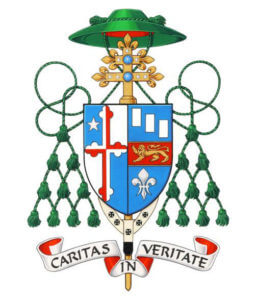- Contact Us
- Careers
- Policies
- About Us
- Parishes
- Schools
- Ministries
- The Office of Black Catholic Ministries
- Hispanic Ministry
- Charismatic Renewal
- Marriage & Family Life
- College Campus Ministry
- Courage/EnCourage
- Miscarriage Ministry
- Prayer Ministry
- Deaf Ministry
- Prison Ministry
- Disabilities Ministry
- Divine Worship
- Divorce Support
- Faith Formation
- Grief Ministry
- Mental Wellness Resources
- Respect Life
- Seek the City to Come
- Young Adult Ministry
- Youth Ministry
- LGBT Pastoral Accompaniment
- Vocations
- myArch
- Outlook365
- Ethics Hotline
- Giving
- Promise to Protect

 The Formal Blazon of The Archiepiscopal Coat of Arms of His Most Reverend Excellency William E. Lori, D.D.
The Formal Blazon of The Archiepiscopal Coat of Arms of His Most Reverend Excellency William E. Lori, D.D.